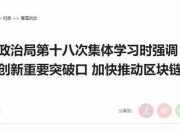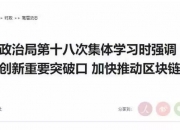一份探索区块链盈利能力不同思想流派的报告。
A report exploring different schools of thought about the profitability of the block chain.
PoW(工作量证明)和PoS(权益证明)区块链有多赚钱?以太坊与Solana的对比如何?区块链的盈利能力对投资者来说是否重要?Vitalik用以太坊的gas钱做什么?
How profitable is the Pow (the workload certificate) and Pos (the equity certificate) block chain? What is the comparison between the Ether and Solana? Is the profitability of the block chain important to investors? What does Vitalik do with the gas money?
加密推特最近卷入了这些问题。本文试图围绕Web3中L1估值这个棘手的主题来解开这些大局问题。
Encrypted Twitter has recently been involved in these issues. This paper attempts to solve these big problems around the thorny theme of the valuation of L1 in Web3.
假设我们想要确定哪个L1代币具有最高的上行空间。研究的第一步是了解区块链的潜在盈利能力。所以,如果你问华尔街的分析师区块链有多赚钱,他们可能会这样计算:
Assuming that we want to determine which L1 is the highest up-front space. The first step in the study is to understand the potential profitability of the block chain. So, if you ask Wall Street analysts how profitable the block chain is, they might calculate this:
收入(总交易费用)-费用(总代币发行)=利润
当应用于PoW以太坊时:
When applied to the PoW-e-Team:

结论很简单:以太坊PoW无利可图,其商业模式从根本上被打破。100%的交易费用支付给了矿工,因此以太坊的收入为零。更糟糕的是,激励区块链验证的ETH发行非常高,使得该链无利可图。当然,我们事后知道ETH的价格上涨了,但那些年的价格上涨纯粹是来自投机狂热的逆风,而不是内在因素。
The conclusion is simple: the PoW is unprofitable and its business model is fundamentally broken. 100 per cent of the transaction costs are paid to the miners, so they are zero. Worse still, the ETH, which inspires the chain to be validated, is very high, making the chain unprofitable.
在2024年的今天,对上述简单分析的批评主要有两种。第一种批评指出,自PoW以来发生了很多变化,而第二种批评则提出了更主观的结构性论点(下一节将对此进行更多讨论)。
Today, in 2024, there were two main criticisms of the above-mentioned brief analysis. The first criticism pointed out that much had changed since PoW, while the second raised more subjective structural arguments (which will be discussed more in the next section).
1.自2021年8月的EIP-1559以来,以太坊gas费被分为基础费和优先费小费。基础费用被烧毁,使得ETH更加稀缺,从而增加了ETH的价值,因此“真实”价值被低估。另一方面,优先级费作为小费支付给验证者。
Since August 2021, the EIP-1559 fee was allocated on the basis of the fee and the preferential tip. The base fee was burned, making the ETH more scarce and thus adding value to the ETH, and therefore the “real” value was underestimated. On the other hand, the priority fee was paid to the certifying officer as a tip.
2.自2022年9月合并并转向PoS以来,代币发行大幅减少。
2. Since the merger and transfer to PoS in September 2022, there has been a significant decrease in the issuance of tokens.
3.自从Flashbot为PoS以太坊发布了MEV-Boost软件以来,用户向验证者支付了额外的区块包含费用,因此收入被低估了。
3. Since the release of the MEV-Boost software by Flashbot for the PoS Etheria, the user has paid additional block inclusion costs to the certifying officer, thus underestimating income.
综上所述,有四个变量影响以太坊网络的盈利能力:
In summary, there are four variables that affect the profitability of the Etherm network:
基本费用(已烧毁)
Basic costs (burned)
优先权费(支付给验证者)
Priority fees (paid to certificationer)
MEV(支付给验证者)
MEV (paid to certificationer)
ETH发行/通货膨胀(支付给验证者)
ETH issue/inflation (paid to certificationer)
当我们更新上面的表时:
When we update the table above:


?自EIP-1559以来,一部分网络交易费用被烧毁,如用户支付的费用减去支付给验证者的部分所示
? Since EIP-1559, some of the network transaction costs have been burned, as indicated by user fees less the portion paid to the certifying authority
?2023年是该网络实现“盈利”的第一个完整年份,这在很大程度上要归功于向PoS的转变
♪ 2023 is the first full year of the network's “profits”, thanks in large part to the transition to Pos ♪
?MEV支付全部支付给验证者,因此ETH持有者看不到任何收入
♪ MEV payments are paid in full to the certifier, so the ETH holder sees no income
结论:以太坊PoW曾经非常无利可图,其商业模式从根本上被打破。但由于EIP-1559更有效的gas定价以及自合并以来代币发行的大幅减少,以太坊今天经营着一项有利可图的业务。
Conclusion: At a time when PoW was very unprofitable, its business model was fundamentally broken. As a result of the more efficient gas pricing of EIP-1559 and the significant decline in the issuance of coins since the merger, it today operates a profitable business.
请注意,PoW矿工/PoS验证者也会在电力和硬件上花钱,但这里省略了,因为这是由验证者承担的外部成本,而不是“网络”。自2024年3月以来,blob费用也是L2 rollup向以太坊支付的收入项目,但这相对较小,因此也被省略了。
Please note that the PoW Miner/PoS Certifiers will also spend on electricity and hardware, but this is omitted because it is an external cost borne by the certifying officer rather than a “network”. Since March 2024, the blob has also been a revenue project paid by the L2 group to the Ether, but this is relatively small and has therefore been omitted.
第二种批评认为,将代币发行视为一种成本是完全错误的。乔恩·夏博诺(Jon Charbonneau)、凯尔·萨马尼(Kyle Samani)等著名人物都提出了这一论点,尤其是阿纳托利(Anatoly),这在最近与贾斯汀·德雷克(Justin Drake)关于Bankless的辩论中可以看出。
The second criticism is that it is entirely wrong to consider the issuance of a token as a cost. Eminent people such as Jon Charbonneau and Kyle Samani have all made this argument, particularly Anatoli, as can be seen from the recent debate with Justin Drake on Banks.
将代币发行视为一种费用意味着代币持有者被稀释了——就像美联储用印钞机稀释你的美元储蓄一样。但事实并非如此,因为用户有权通过像Lido这样的流动性质押平台在PoS链上获得网络的通胀代币发行。此外,ETH的质押者还可以获得优先费和MEV付款。
Considering the issue of a token as a cost means that its holders are diluted – just as the Fed dilutes your dollar savings with a printing machine. But that is not the case, because users have the right to receive network-based inflation in the PoS chain through mobile deposit platforms like Lido.
如果你有这种想法,那么你要问自己的问题是:我在一个流动的投资平台上投资的ETH的实际收益是净正的。既然我可以轻松获得现金流,那么作为ETH持有者,我为什么还要关心以太坊是否“盈利”?
If you have such an idea, then ask yourself: The real benefits of the ETH that I invest in a mobile investment platform are net. Since I can easily access cash flows, why do I care if Ether is a “profit” holder?
考虑这样一个思想实验:所有从央行印钞机中膨胀出来的钱,同时被平等有效地分配给每个公民。在这种情况下,没有人会变得更糟或更好。基尼系数没有改变,每个人的法定持有量名义上更高了,但同样数量的实际价值追求同样数量的商品和服务。当然,现实世界并非如此。当印钞机开动时,膨胀的货币供应在不同的时间到达经济中的不同参与者,从而使那些首先获得新货币供应的人受益(称为坎蒂隆效应)。但这实际上是PoS区块链经济中正在发生的事情。
Consider the idea that all the money that expands from central bank printing machines is distributed equally and effectively to every citizen. In this case, no one gets worse or better.
因此,当每个人都从央行的印钞机中获得等量的现金流时,痴迷于美国经济的“盈利能力”是毫无意义的,同样,关注以太坊区块链的“盈利能力”也是毫无意义的。
Thus, when everyone gets the same amount of cash flow from the central bank's banknote printing machine, it makes no sense to be obsessed with the “profit” of the United States economy, nor does it make any sense to focus on the “profit” of the Ether district chain.
这还没完。如果这种分析的逻辑是正确的,并且代币发行不是成本,那么这意味着非质押者实际上正在被稀释,因为他们没有收到代币发行。
This is not over. If the logic of this analysis is correct, and the issue of tokens is not a cost, then it means that non-moldiers are actually being diluted because they have not received the issue.
那么关键的分析问题是:以太坊持有者和以太坊质押者的价值流有什么不同?
The key question for analysis then is: What is the difference between the value flow of Ethers and Ethers?


?优先费、MEV支付和ETH发行现在都从“成本”项目转为“收入”项目
♪ Priority fees, MEV payments and ETH issuances are now moving from “cost” to “income” projects
?由于EIP-1559的燃烧和向PoS的转变,ETH持有者仍然是净正的。但是ETH的质押者通过为网络验证做出贡献而获得了更大的价值份额。
♪ The EIP-1559 burn and shift to PoS, the ETH holder is still net positive. But the ETH pledgeer gets a greater share of value by contributing to the network validation.
?对于这里的质押者来说,一个可以忽略不计的成本项目是在 Lido 上质押的 ~10% 佣金率
♪ For the pledge here, a negligible cost item is the ~10% commission rate pledged on Lido
总而言之,一个“无利可图”的区块链似乎很可怕,但质押者仍然从价值流中获得净收益。上述简单的收入-成本=利润框架在TradFi中是有意义的,因为股东对股息支付或资产有法律要求。但股票与L1代币不同,因此“区块链盈利能力”的宏观经济观点不太相关。
In sum, a “no profit” block chain may seem terrible, but the pledgeer still earns a net gain from the value stream. The simple income-cost = profit framework mentioned above is meaningful in TradFi, because shareholders have legal requirements for dividends or assets.
现在让我们看看Solana。
Now let's see Solana.

?Solana的交易费模型将费用分为投票交易和非投票交易。投票交易由验证者提交给网络共识的投票签名,而非投票交易是跟踪网络活动的主要指标,因为它指的是不同Solana账户/智能合约之间的SOL转移。两者在这里都算作收入项目。
? Solana’s transaction fee model divides costs into voting and non-voting transactions. Voting transactions are submitted by the certifier to the voting signature of the web consensus, and non-voting transactions are the main indicators for tracking network activity, as it refers to the transfer of SOL between different Solana accounts/intellectual contracts.
?从网络 POV 来看,Solana根本无利可图。
♪ From the Web POV, Solana has no profit at all. ♪

但正如Solana的支持者倾向于认为的那样,上述估值模型是无关紧要的,因为SOL持有者可以通过质押来获得网络发行。因此,让我们来看看价值流向SOL持有者和质押者:
But, as Solana’s supporters tend to believe, the above valuation model is irrelevant, because SOL holders can get online distribution through a pledge. So let's see if the value flows to SOL holders and pledgeors:
?正如预期的那样,由于网络发行大幅稀释了SOL持有者的价值,因此持有者的价值流为负值。但SOL的质押者在收到网络发行时是净正的。
As expected, because the value of the SOL holder is significantly diluted by web distribution, the holder’s value flow is negative. SOL’s pledge, however, is positive when it receives it.
?由于Solana的gas费用非常便宜,该网络遭受了以先进先出为基础的垃圾交易的反常激励。为了缓解这个问题,Solana开发者为用户提供了一个选项,让他们支付50%的优先费给区块构建者(称为“领导者”),剩下的50%烧掉。这两项都包含在收入项目中,因为SOL质押者从两者中获得价值。值得注意的是,在一周前,治理已经改变了这一点,将100%的优先级费用分配给验证者。
In order to alleviate the problem, Solana developers offered users an option to pay 50% of the priority fees to block builders (known as “leaders”) and to burn the remaining 50%. Both were included in the income items, because SOL pledgeers gained value from both. It is worth noting that, a week ago, governance changed that by allocating 100% of the priority costs to the certificationer.

为了让这一点回到原点,请记住,价值累积仅适用于PoS链的L1代币。
In order to bring this back to square one, bear in mind that the cumulative value applies only to L1 in the PoS chain.
在像比特币(或以太坊合并前)这样的PoW链的情况下,没有这样的价值累积,因为没有“Lido”,你可以选择进入那里获得比特币发行的份额。比特币的发行是网络的直接支出,类似于美联储印刷美元,稀释任何持有美元的人的实际价值。
In a PoW chain like Bitcoin (or before Etheria merges), there is no such accumulation of value, because there is no “Lido”, where you can choose to enter to get a share of the Bitcoin issue. Bitcoin is issued as a direct expense of the network, similar to the Fed printing dollars, diluting the real value of any dollar holder.
更糟糕的是,100%的比特币发行都支付给了矿工,他们花费大量的电力来提供服务,以换取奖励。矿工将出售比特币来支付他们的运营成本,因此会给市场带来抛售压力。总而言之,如果你持有比特币,你不仅会从代币发行奖励中被稀释,你的持有量也会受到矿工的巨大抛售压力。
Worse still, 100% of the bitcoins are distributed to miners, who spend a lot of electricity to provide their services in exchange for an incentive. Miners will sell bitcoins to pay for their operating costs, thus putting pressure on the market. In short, if you hold bitcoins, you will be diluted not only from the reward issued in tokens, but your holdings will also be under great pressure from miners to sell.

这一切都让比特币看起来像是一种建立在破碎的代币经济学基础上的可怕数字资产。然而,这一结论源于试图将用于ETH的相同估值模型硬塞到BTC中。比特币最大化主义者可能会辩称,这犯了一个严重的分析错误,即将BTC和ETH视为同一类型的资产,而BTC更像是一种类似大宗商品的货币资产。
All this makes Bitcoin look like a terrible digital asset based on the economics of broken tokens. However, this conclusion stems from an attempt to harden the same valuation model used for ETH into BTC. Bitcoin Maximists may argue that this makes a serious error of analysis by treating BTC and ETH as the same type of asset, while BTC is more like a monetary asset for a large commodity.
如果是这样,那么对比特币进行估值就需要一种不同的模型,这种模型可以合理地根据比特币的货币溢价定价,而不是简单的收入-成本=利润框架。
If that were the case, then a different model would be needed for the valuation of Bitcoin, which could reasonably be priced on the basis of a currency premium on Bitcoin, rather than a simple income-cost = profit framework.

比特币货币通胀@_BashCo
无论你站在辩论的哪一边,不可否认的是,在一个理想的世界里,代币发行将是零,或者至少接近于零。正如Polynya在这里指出的那样,即使代币持有者有一种简单的方法来避免稀释,对于非质押者来说,仍然存在价值损失。所有非质押者都承受着代币发行的通胀压力——包括出于安全原因将代币放在冷钱包中的人,不在链上的加密货币投资者,将L1代币部署到风险收益更高的DeFi活动的人,等等。
Regardless of which side of the debate you are on, it is undeniable that in an ideal world, the issue of coins will be zero, or at least close to zero. As Polynya has pointed out here, even if there is a simple way to avoid dilution, there will still be a loss of value for non-moldiers.
以太坊社区的主要思想领袖通常会站在“代币发行是一种成本”辩论的一边,而alt-L1则站在另一边。考虑到以太坊开发人员今天致力于使ETH通货紧缩的大量努力,以及围绕进一步降低ETH发行的持续讨论,很容易理解为什么以太坊领导者如此强调将发行视为成本。
The leading thinkers in the community tend to be on the other side of the debate about “money issuance as a cost.” Given the enormous effort that the ITA developers are working on today to tighten the ETH deflation, and the ongoing discussions around further reducing the ETH issuance, it is easy to understand why the emphasis on distribution as a cost has been so emphasized by the ITA leaders.
另一方面,alt-L1的代币通货膨胀率往往要高得多,与以太坊相比,Solana等链的质押率往往要高得多,这可能解释了将代币发行解释为成本的动机。
On the other hand, alt-L1 currency inflation tends to be much higher and the bond rate in chains such as Solana is often much higher than in Etherko, which may explain the motivation to interpret the issue as a cost.
注册有任何问题请添加 微信:MVIP619 拉你进入群

打开微信扫一扫
添加客服
进入交流群




















发表评论